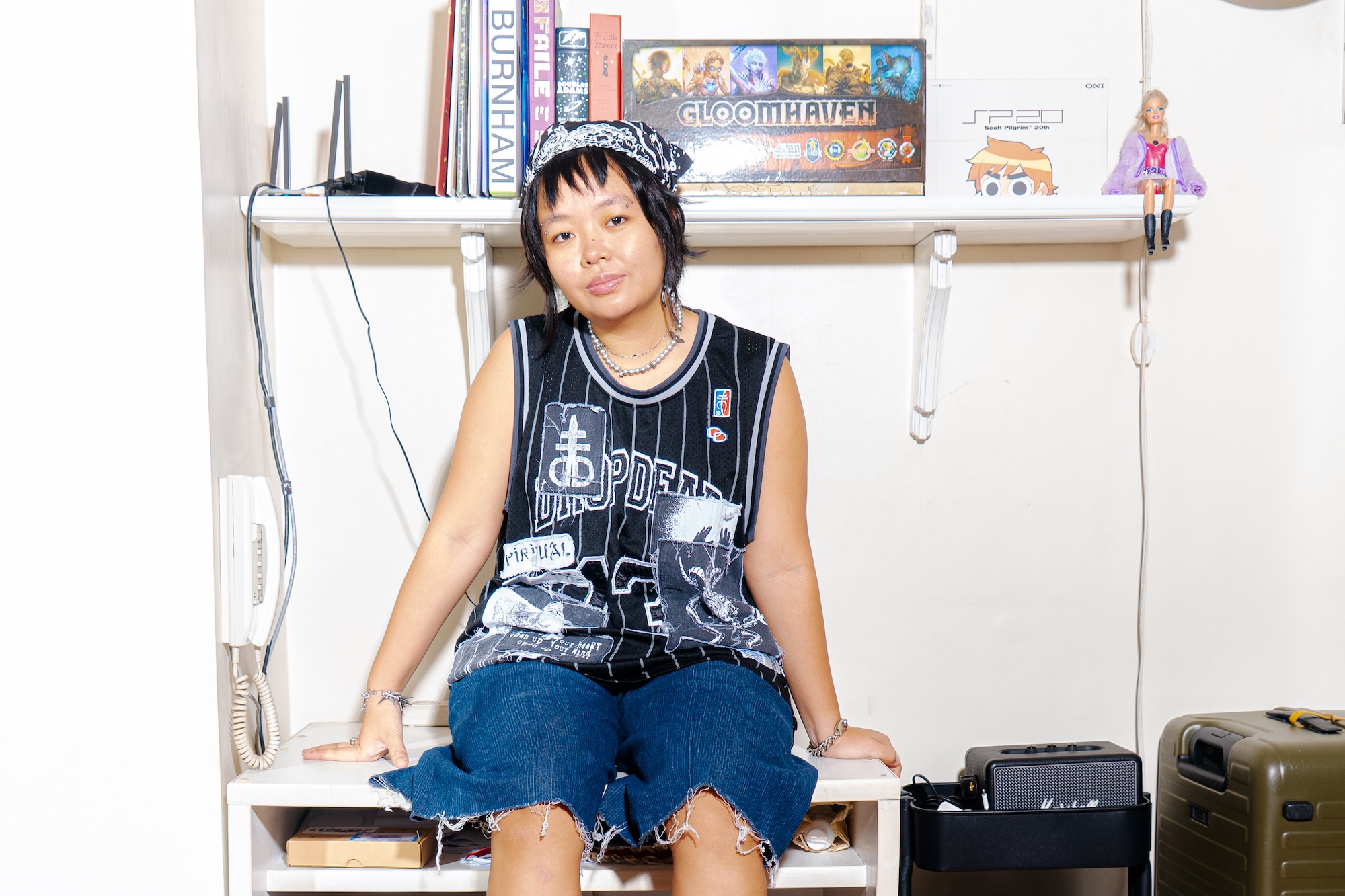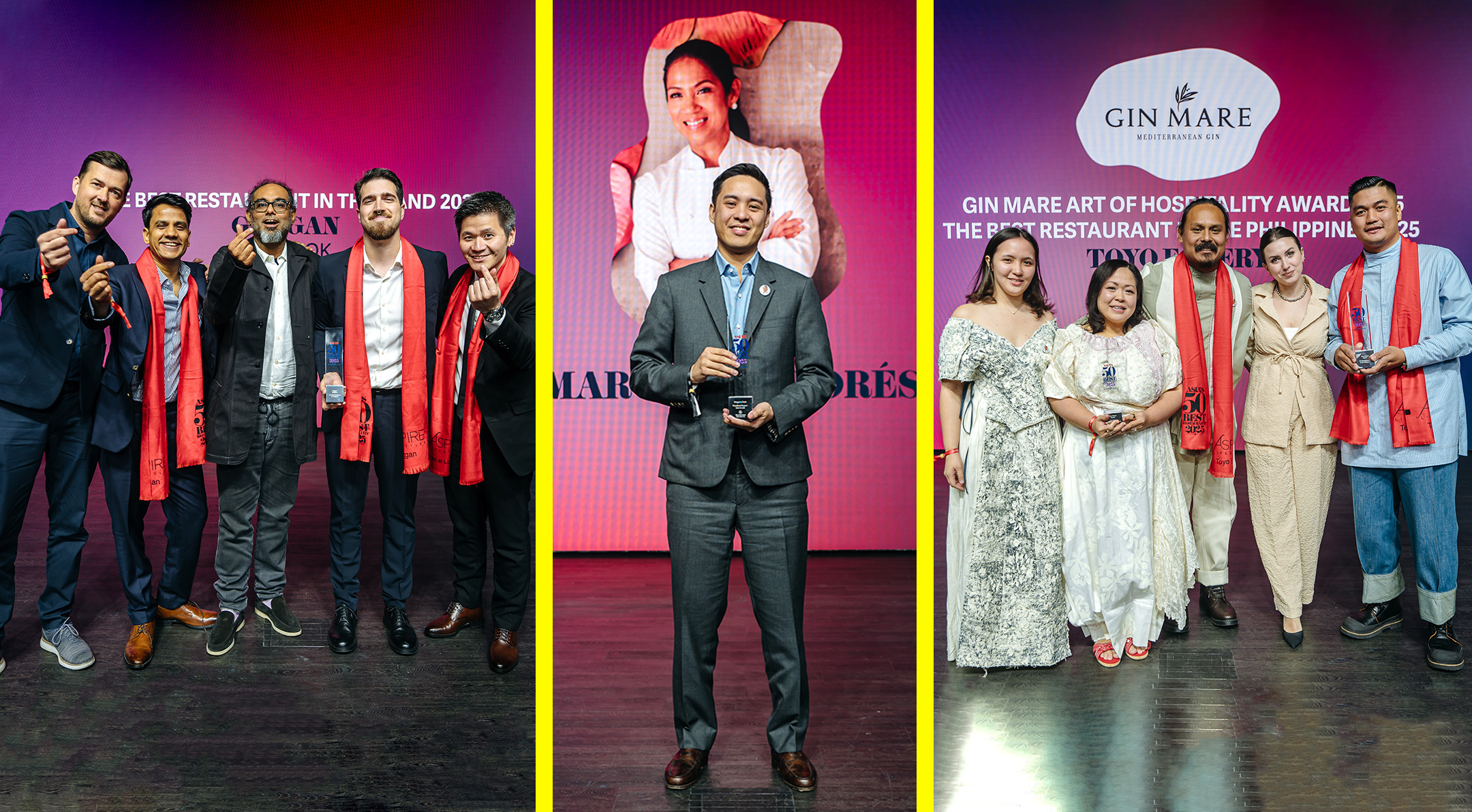In September 1519, a fleet of five ships and a crew of more than 200 set sail from Spain to find a westward route to the Spice Island now known as Indonesia. Portuguese explorer Ferdinand Magellan headed this expedition that ultimately led to his death at the hands of the settlers of Mactan. Only one ship and less than 20 people returned to Spain in 1522.
Nonetheless, the remaining crew reached the Spice Island and obtained some ingredients. But apart from stashing some 20,000 kilos of cloves, the explorers also discovered coconuts and bananas, among others, from their landing in places such as Andalusia, the Canary Islands, Brazil, Argentina, Chile, the Philippines, Indonesia, Guam, Borneo, Timor, and Cape Verde. This is all thanks to Basque navigator Juan Sebastián Elcano, the captain of the ship Victoria that reached the Moluccas 27 months after they left Spain. Elcano is considered the first man to circumnavigate the world.
This achievement and its subsequent discoveries are the central themes of this year’s San Sebastian Gastronomika, an annual food congress that started 21 years ago in Donosti, Basque Country, Spain.

Retracing Elcano’s route at San Sebastian Gastronomika
This year’s San Sebastian Gastronomika is in many ways a culmination of Elcano’s expedition with more than 140 chefs and speakers from across the world assembling at the Kursaal Congress in San Sebastian to retrace the gastronomical journey of the explorers five centuries ago.
At the same time, it is also an acknowledgment of how far human ingenuity and the transatlantic exchange of cultures has taken the art of cooking.
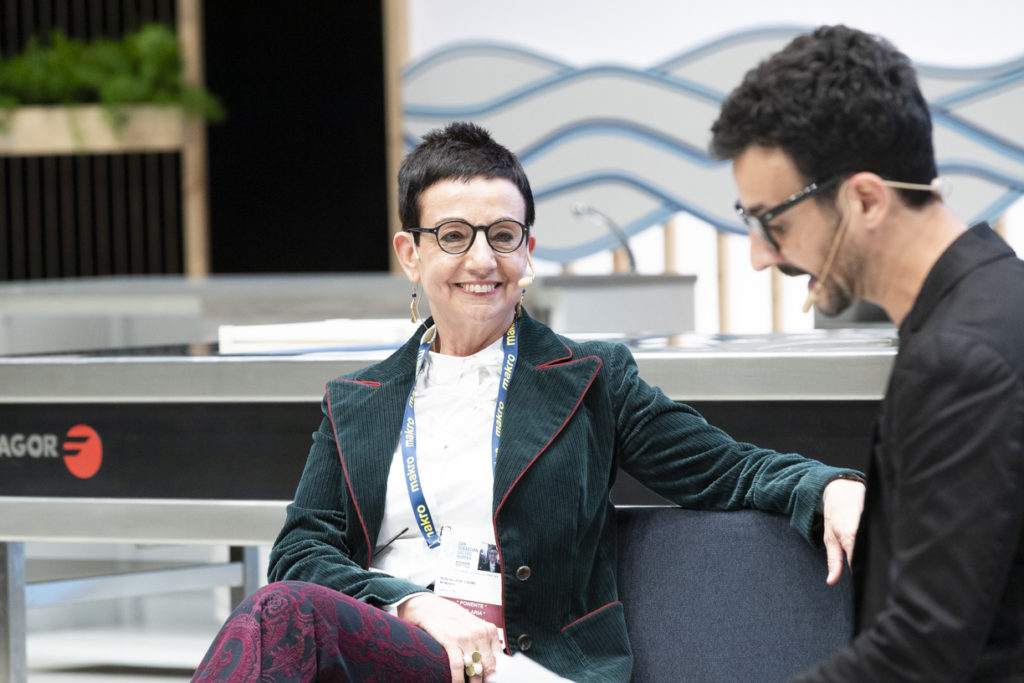
But this is hardly the end game as this edition’s keynote speaker Carme Ruscalleda, the Catalan chef behind three Michelin-starred restaurants Sant Pau in Catalonia and Tokyo, and Moments in Barcelona said speaking about the impact that San Sebastian Gastronomika has had on her career, which, sadly, she is leaving behind after over 40 years.
“Nowadays, the gastronomic experience is more technological, it’s online. We must adapt in order to find a balance between working hours and private life as well,” says Ruscalleda.
Spanish chef Dani García of three Michelin-starred restaurant Marbella called for a second revolution in Spanish cuisine following the first one that took place 21 years ago. “Gastronomy is not just haute cuisine, it’s much more than that. In this respect, we might have a second revolution.”
“Gastronomy is not just haute cuisine, it’s much more than that. In this respect, we might have a second revolution,” says Dani García.
In his final presentation as a chef (García announced last year after receiving a third star that he will be closing Marbella), the 43-year-old recounted his first time at the San Sebastian Gastronomika stage when he was still with Basque icon Martín Berasategui.
“Twenty-one years ago, with Martín Berasategui, I came to San Sebastian Gastronomika for the first time and discovered a world. I fell in love with haute cuisine. Now, two decades later, I have decided to give it up but to continue in the world of gastronomy.”
Adapting to the climate crisis
But this is not to say that the 21st iteration of the congress is all about goodbyes. Together with the convergence of cultures, the prevailing message this year is the realization that like any other industry, the food industry is also hugely impacted by the climate crisis.
On the first day, Eneko Atxa, who received the “Chef of the Year” award at the last Madrid Fusión, championed sector community-based sourcing. At his restaurant Azurmendi in Larrabetzu, he said, they utilize every part of every ingredient “out of respect to the hard work of these farmers” and to also showcase their range to diners.
Brazilian chef and El Celler de Can Roca alumna Bel Coelho also follows this philosophy. “Being creative with fantastic recipes is good but I also want to have sustainable local ingredients so the food chain can sustain our ecosystems, so the farmers and family businesses can thrive,” she said as she presented dishes she developed based on the deities of the Orixá tradition of the Afro-Brazilian religion, Candomblé.
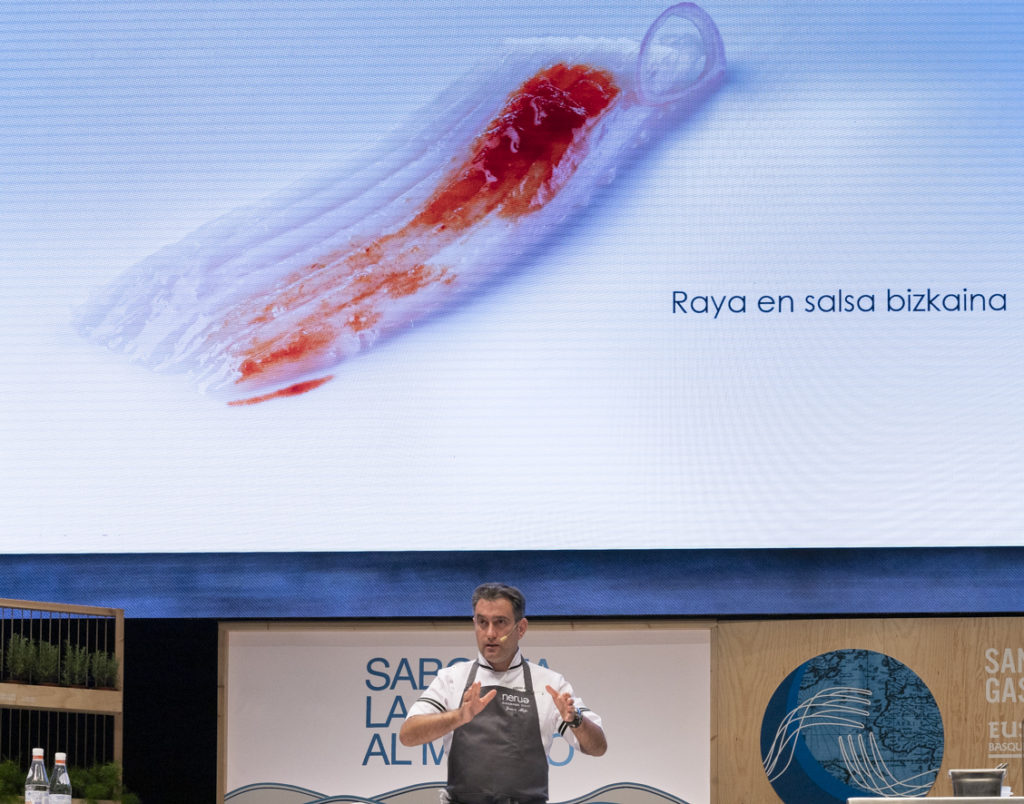
“We have to stop and think about our present, which is beautiful but things are changing, so we have to start doing things differently,” said Josean Alija who touched on the effects of the climate crisis on seasonal crops and how to adapt through techniques.
Alija lamented the partial disappearance of juvenile squids that are so fundamental to his restaurant Nerua whose menus depend on the availability of such seasonal ingredients. He was also perhaps the most outspoken on this subject, speaking in the same sense of urgency that activist Greta Thunberg displayed at the UN Climate Action Summit about the world leaders’ complacency in the face of the environmental emergency.
“We have to stop and think about our present, which is beautiful but things are changing, so we have to start doing things differently,” said Josean Alija of Nerua in Guggenheim Bilbao who touched on the effects of the climate crisis on seasonal crops and how to adapt through techniques.
The Basque Culinary Center, one of the region’s most influential culinary institutions, also showcased its efforts towards future-proofing the concept of sustainability by integrating it into their curriculum as a source of inspiration and a continuing field of research.
Tradition and creativity at San Sebastian Gastronomika
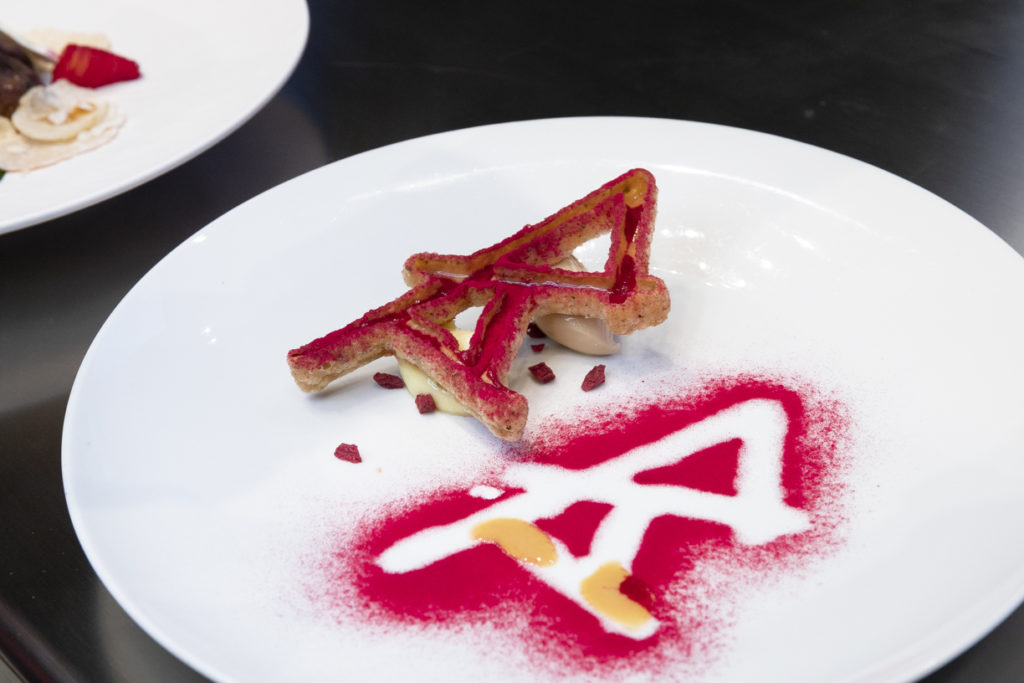
Another issue that this year’s congress wrestled with is the intersection of established culinary traditions and the role of creativity—neither one having to succumb nor give way to one another but finding harmony between the two.
For Elena Arzak, for example, it helps that the staff at the namesake restaurant she co-heads with father Juan Mari is a diverse bunch, promoting a “confluence of cultures.” She started her deck with the metaphor of the table and how over the years it has come to stand for many things but ultimately the idea of a tight-knit family gathered over food, a constant in this evolution.
Respect to their values, roots, and experiences is something that fuels their daily operations but without foresight and the courage to interpret these rules and traditions, she admits that Arzak wouldn’t be the restaurant that it is today.
Tradition is Basque culinary legend Berasategui’s anchor, too. On how he seamlessly blends this with his avant-garde tendencies, he simply said that in every turn he takes, he always comes back to a clear route towards Basque traditions.
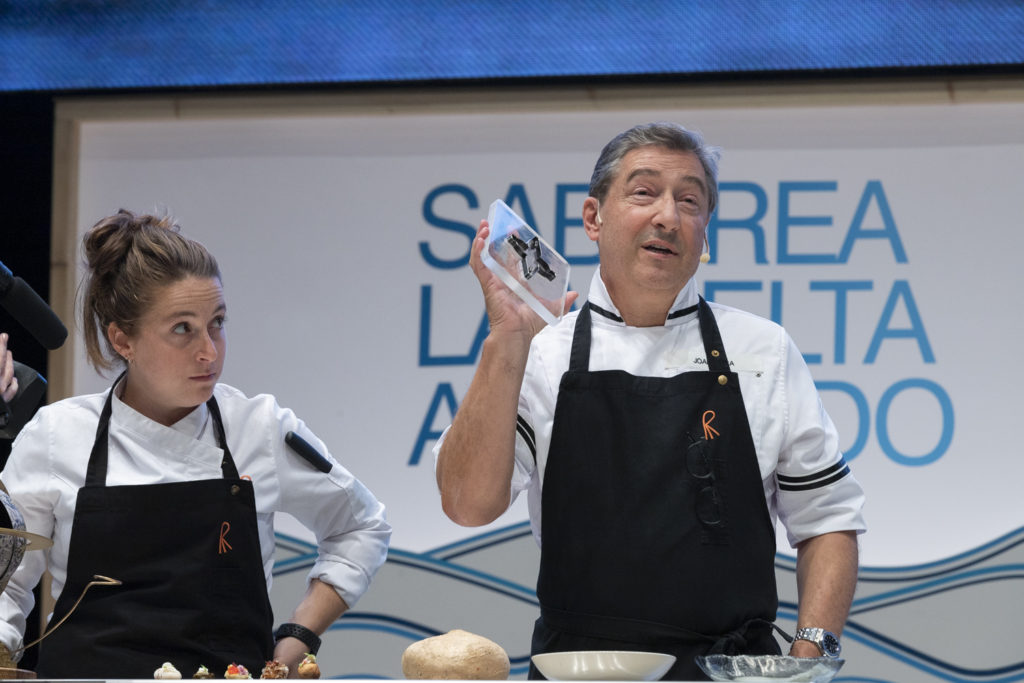
Joan Roca doesn’t mind messing with the rules a little and letting his cuisine be influenced with that of others’ either. True to this year’s theme, he presented, as an example of his playfulness at El Celler de Can Roca, a starter served in a mechanical globe that also alludes to his love of travel and cultural convergence. “The idea of going somewhere prompts you to do something closer to home,” he said.
Outside the Spanish territory, from the very destination that the early explorers only dreamed of reaching until the Elcano expedition—Moluccas or modern-day Indonesia—is Kevin Cherkas of Cuca. The Canadian chef wowed the congress with his anti-establishment take on Indonesian flavors that also solved two prevailing dilemmas in their region: the locals’ disregard for indigenous ingredients and the West’s fear of the unfamiliar that has long disengaged them from the cuisine.
Filipino cuisine through the eyes of three chefs
Quite predictably, as this congress focused on the discoveries of Elcano and his group, the Philippines (or at least what was to become the Philippines then) figured prominently. In the accounts of scholar Antonio Pigafetta, it was during the feasts at Limasawa in Leyte where Magellan and his men were introduced to coconuts—both as decoration and a viable source of various raw ingredients and byproducts.
This same ingredient is the star in JP Anglo’s talk on Negrense cuisine, using coconut sap vinegar and latik or coconut milk curds for the quintessential chicken inasal. This, along with other dishes, made appearances at his presentation table that resembled a boodle fight on one giant banana leaf, which originated from the practice of American military troops assigned to the Philippines.
As to why he chose to showcase this, he said, “Because this is the way we eat in the Philippines. To understand Filipino food I can’t just serve two dishes.”
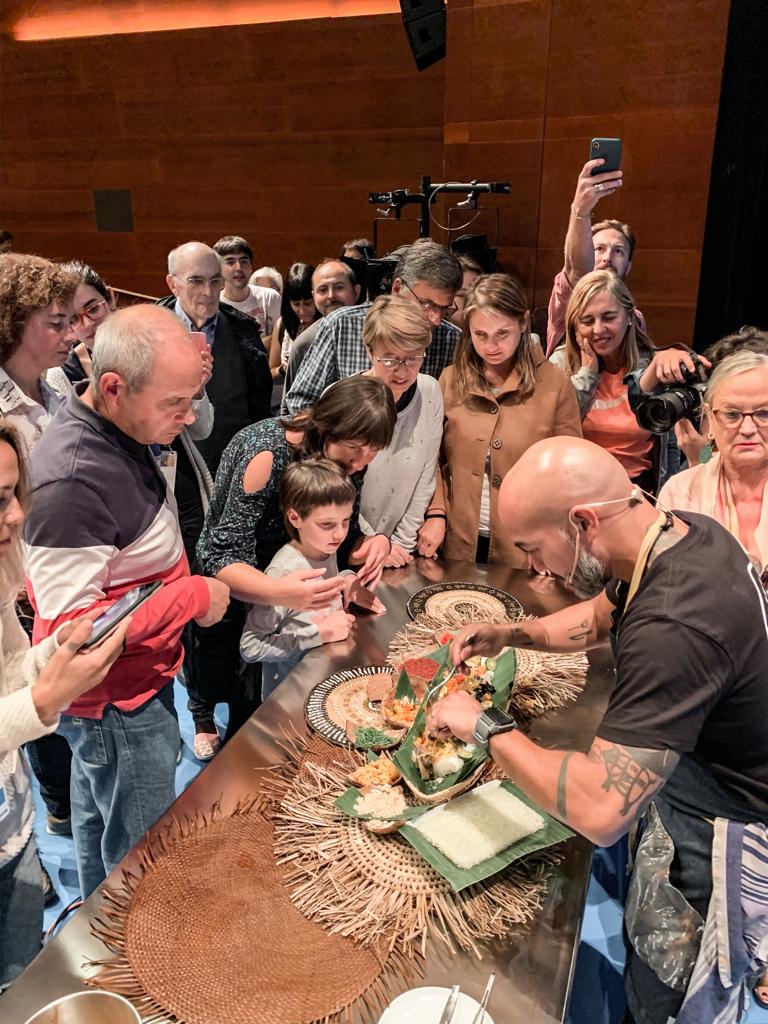
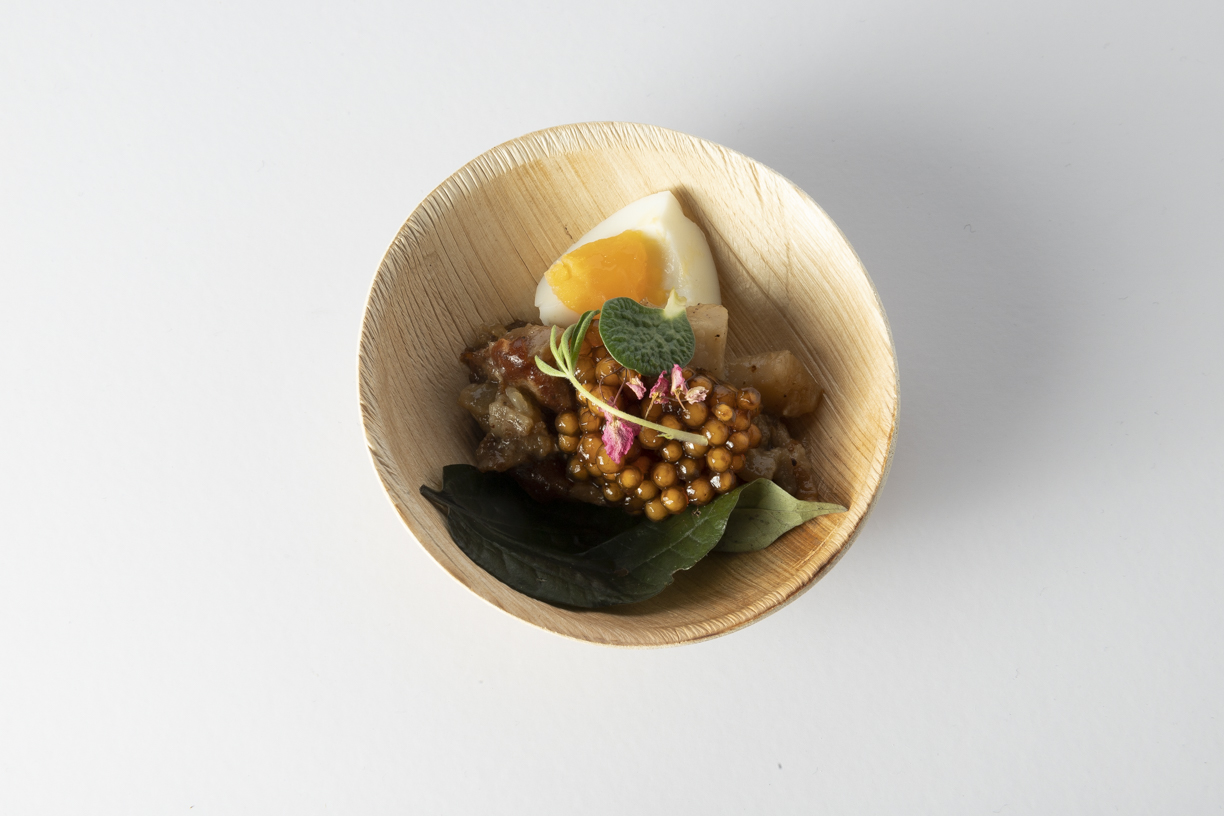
Of course, what is Filipino cuisine without mentioning the culinary capital Pampanga? Angeles City-born Sau del Rosario, a French-trained chef who took to France after Mt. Pinatubo erupted in 1991 to chase after his dream of becoming a chef like his father, focused on cacao. He prepared two dishes: a version of his hometown’s famous sisig doused with cacao vinegar and champorado using tablea with a side of adobo cod floss.

But perhaps the breakthrough even to del Rosario and Anglo was Argentina-based, Korean-American chef Christina Sunae, who was raised by a Filipina foster mother in Angeles City, Pampanga. At her Latin American-Southeast Asian cantina, Sunae whips up Filipino dishes prepared using only what is available to her.
That is saying a lot considering the difference in geography and culture between these two cuisines. Plus, her only reference recipe-wise is her annual visits back home. Sunae will be opening a restaurant at Bonifacio High Street under the Nikkei Group in February.
A new wave of food technology
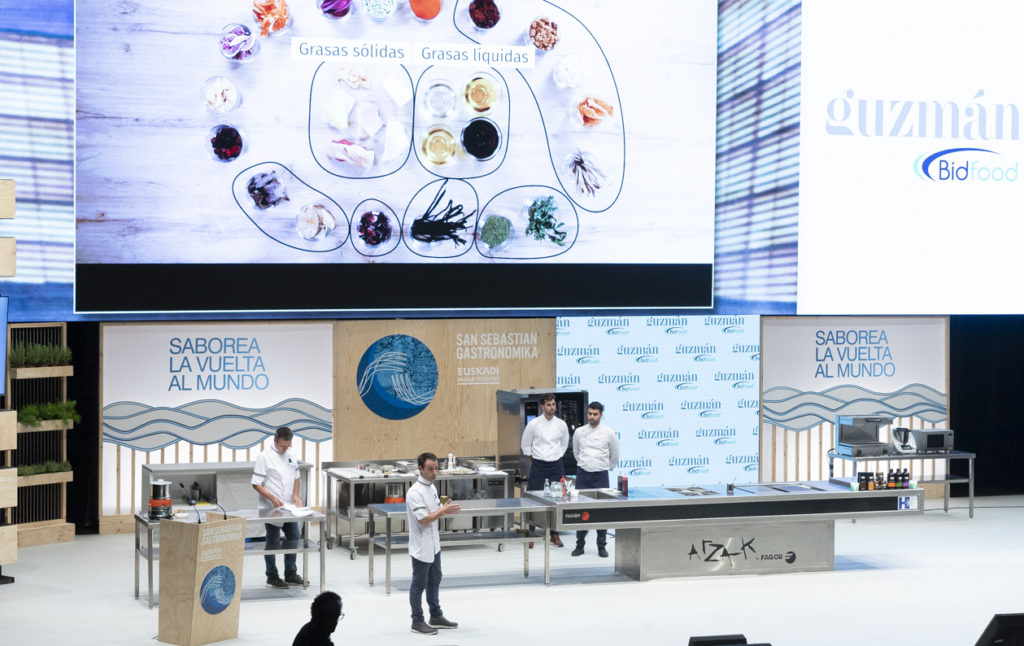
San Sebastian Gastronomika also witnessed a few technological advances in the field of food production. On the first day, there was the trio of elBulli alumni Oriol Castro, Eduard Xatruch, and Mateu Casañas who explored the possibilities of fat.
Using a chocolate conching machine, they were able to infuse fats—both solid and liquid like cacao butter and clarified butter—with stronger, unheard-of flavors unlike any other method like, say, mechanical blending, which does a decent job but doesn’t preserve much of the original taste of the additive. The result is fats with varied flavor profiles and distinct textures from brittle cacao shards to smooth praline.
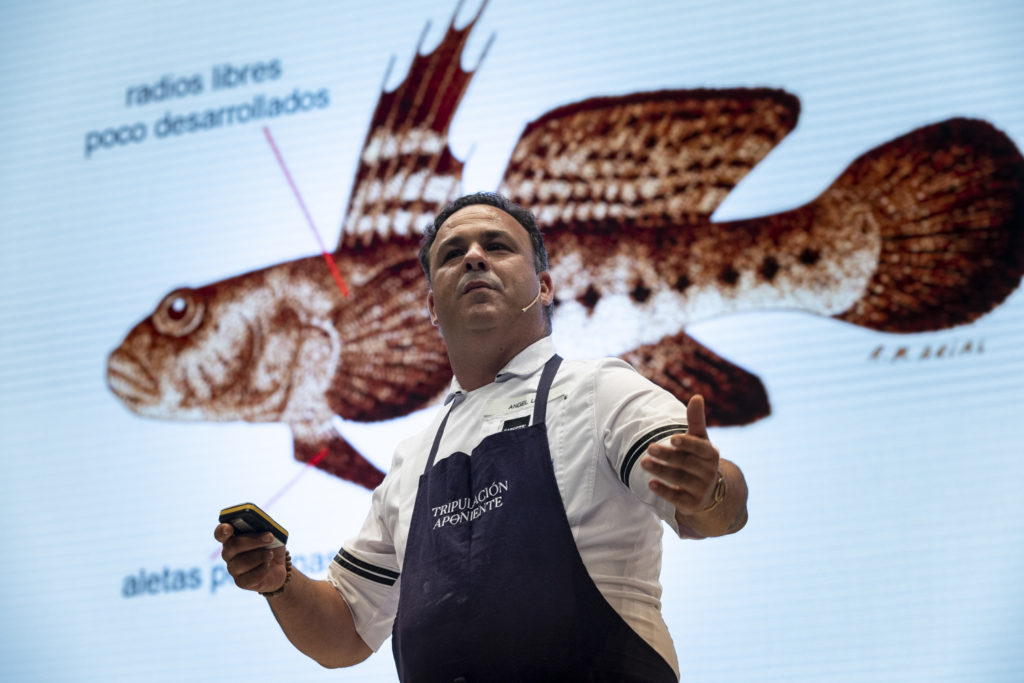
Meanwhile, Andalusian provocateur Ángel León isn’t done with amusing the culinary world just yet. From turning seawater into salt real-time at this year’s Madrid Fusión, he came up with other marine innovations in an effort to utilize the undiscovered wonders of the sea.
One is the development of the first-ever aquatic plant-derived sugar from processed tassel pondweed (Rupia maritima) with the end product looking exactly like white refined sugar, which was just as easy to caramelize.
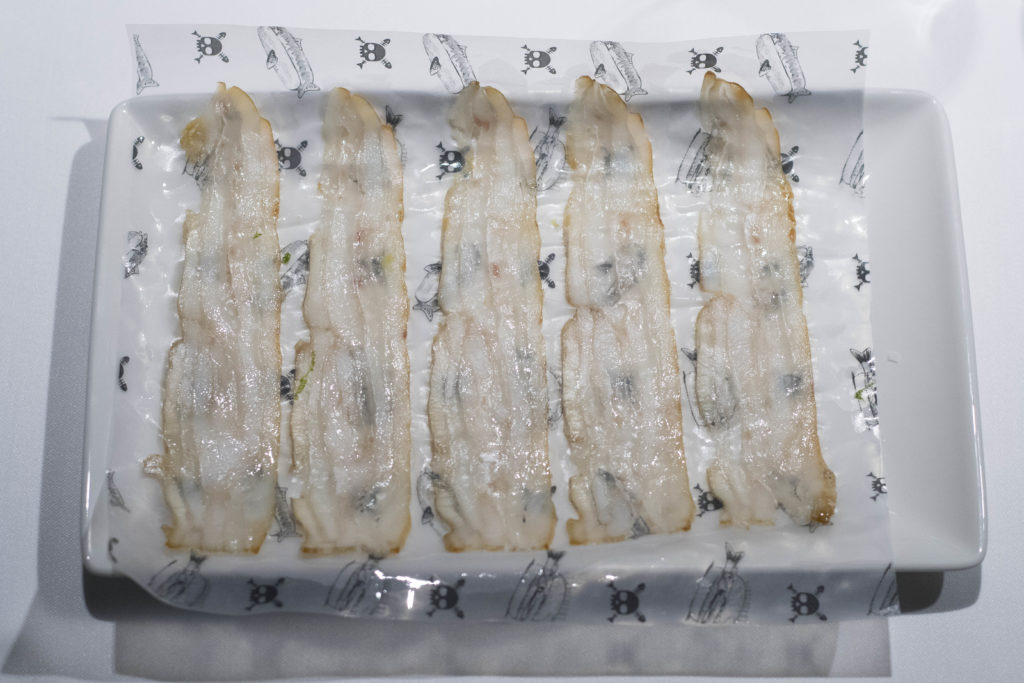
He also made seaweed noodles and cheese, and even bacon from tuna belly shavings. Such discoveries have led him to investigate the parallelisms of terrestrial and marine ecosystems, interrogating whether the Earth copied the sea or vice versa.
Both innovations prove that as far as food is concerned, the culinary world hasn’t run out of ideas. Industry players may have explored and discovered everything on land just as Elcano’s triumphant circumnavigation did but then again, as León’s latest innovations prove, there’s still the vast sea that’s waiting to be explored.




